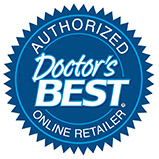|
|||||||||||||||||||||||||||||||||||
|
Glutathione + Liposomes = Improved Absorption
by Tim Guilford, M.D. Glutathione is a naturally occurring, water-based antioxidant—the body's best defense against excess oxidation that enhances immune function and removes toxins. A team player, glutathione functions in concert with vitamins C and E to help recycle these important antioxidants and is made from three amino acids: glycine, glutamine, and cysteine. Continually in use, it must be produced constantly. For example, it is estimated that the glutathione in red blood cells (RBC) is used, then remade, every one-to-two days. As the body's master antioxidant, a deficiency in this healing agent has been associated with a large number of diseases, including:
Furthermore, low glutathione levels in immune cells lead to chronic inflammation, a component of many illnesses. Chronic inflammation is associated with a growing list of problems including allergy, asthma, autoimmune disease, even vascular disease. In spite of the observation of deficient glutathione in many disease states, there are only a dozen or so articles related to the clinical use of glutathione. Most of the clinical articles are in reference to the use of the intravenous form of glutathione. While glutathione in the powdered form has been present for over 25 years, it is notable that there are so few clinical articles.How can you increase your body's ability to absorb this master antioxidant? Some scientists conjecture that the glutathione is absorbed into the cells of the gastrointestinal tract, but is not dispersed into the blood stream. A well-researched way to maximize absorption of water-soluble compounds is liposome encapsulation. Liposomes are fat soluble on the outside and water soluble on the inside, so a water-soluble material like glutathione will stay stable inside the liposome. Generally, liposomes are made using essential fatty acids, in this case derived from lecithin. Liposomes can contain one or several layers, with each fusing with membranes, allowing first an entry into the circulation, then into cells where it may be needed. The layers themselves are extremely thin, using a space of only one molecule to form the bubble membrane. An electron microscope is needed to see these thin layers as the liposome bubble itself is only 100 to 500 nanometers in size, about half the size of a human hair. Lecithin is a combination of naturally occurring phospholipids derived from soybean oil. Studies with individuals allergic to soy have found that very little soy protein remained in lecithin, so the chance of reactivity is very low. It is the protein portion that is immunologically stimulating. Thus, while lecithin is used, there is actually little soy protein in the product. ReadiSorb Liposomal Glutathione is an oral liquid composed of reduced glutathione contained within liposomes. Using this liposome technology, it encloses the reduced glutathione, facilitating absorption. Each teaspoon contains 420 mg of glutathione. Studies have demonstrated that the glutathione is stable in this form. By improving the availability of glutathione via liposome encapsulation, you can improve our body's natural defenses to protect itself from damaging free radicals and oxidation. |
|
|||||||||||||||||||||||||||||||||














